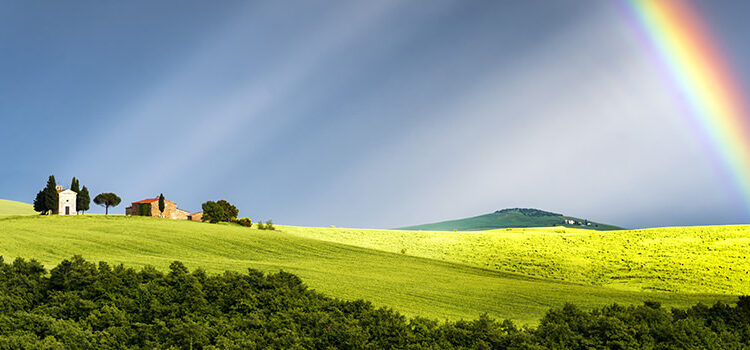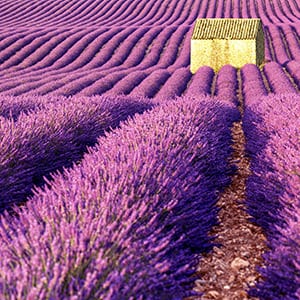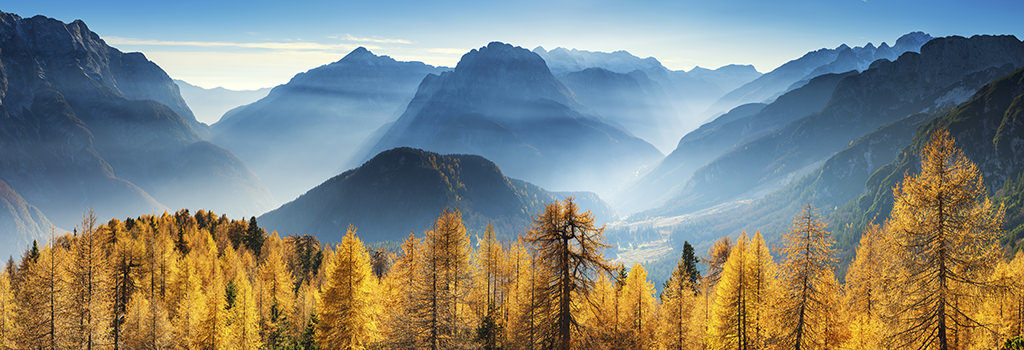
The beauty of photography is that it is ultimately an art form and therefore it could be argued that there are no good or bad photos, simply that beauty is in the eye of beholder.
However, there are a number of landscape photography techniques that are widely considered to be guiding principles that support the creation of what many people consider to be a great image.
Mastering the use of light
Before even reaching for your camera to take a photo, all photographers need to take time to consider the available lighting, the strength and position of the sun and consider their composition options and whether the shot they want to capture is actually achievable at that moment.
Simply seeing a scene with your eyes and immediately snapping it with a camera rarely leads to a quality image.
Correct use of light floods an image with impact and atmosphere. From pale accent colours over a misty lake, to a vivid field of lavender at sunrise, using lighting correctly can completely transform the feel and success of a photo.

Great composition
Leading photographers have the ability to condense everything they are seeing in a landscape and visualise a final image in their mind of the shot they are seeking to capture.
Hand holding your camera and looking at different framing options can greatly help with selecting which elements will make the perfect shot.
Using the rule of thirds – and breaking it!
In case you have not come across it before, the rule of thirds supposes that a frame is divided by three horizontal and three vertical lines and that subject matter should be correctly divided between the resulting nine even squares – its widely considered one of the foundation landscape photography techniques.
In general terms, it is considered more pleasing on the eye if the base third of your image is devoted to foreground, the middle third to horizon and the final third of the frame to sky. As a general rule, your key focal point/subject matter should be around the four intersecting points in the middle of the frame.
However, many impressive shots can be obtained by breaking the rule of thirds with the right supporting reasons.
For the amateur photographer though the rule provides a useful guiding principle when composing shots.
Framing your shot
Before even heading to the viewfinder, too many photographers overlook to consider the orientation they should be shooting from to make best use ofthe subject matter they are photographing. Some shots may lend themselves much better to a portrait orientation rather than a landscape orientation.
Equally, and particularly relevant with regards to landscape images, a panoramic image may be the best composition for the image you are trying to capture.
Many digital cameras now have software built in to allow stitching of images together to create a panoramic image, or these can be merged using editing software in post processing. If you would like to know more about how to do this head over to our dedicated blog on this subject and other landscape photography techniques.
Landscape photography techniques using leading lines
This technique is all about placing lines or items within a shot that naturally feed your eye in from the corner of an image into the centre of the shot.
Correctly composed leading lines should naturally draw your eye into an image free of distraction.
Examples of leading lines could be a path or road cutting into a landscape, lines of corn or lavender, marks on a ploughed field or a sea defence or pier heading out to sea.
Use of leading lines also brings balance and impact to your composition when used effectively.
Balancing composition with lighting
 One of the other most useful tips for improving landscape photographers is to gain a deep understanding of the relationship between composition and lighting. A great composition with poor light very rarely ever turns into a great image.
One of the other most useful tips for improving landscape photographers is to gain a deep understanding of the relationship between composition and lighting. A great composition with poor light very rarely ever turns into a great image.
However, great lighting with average composition can still turn out as an acceptable image. But look at what separates the great images that inspire you as a photographer from those that don’ t and it’ s that they will nearly always have achieved a fantastic balanced use of lighting and composition.
So how do you achieve this delicate balance?
Firstly, start with lighting. What are the weather conditions going to be doing when you plan to take your shot and how will you manage such conditions? Modern digital cameras offer much improved ranges of latitude in which to photograph in low light with super high ISO settings and vastly improved noise control.
Think about how lighting will bring impact and drama to your image.
At the start and end of the day softer light is usually the photographer’s friend, albeit shooting into the sun for example can make shots full of contrast, so understanding the use of filters to control this issue becomes important.
In summary, there are many techniques you can experiment with and perfect as a photographer, all of which should provide you with enhanced levels of confidence to capture great images.
Checklist of key landscape photography techniques
- Mastering the use of light
- Adjust your camera settings to align to the techniques of capture you want to use
- Take time to think through your composition
- Consider the best orientation for your image
- Use the rule of thirds – but don’ t be afraid to break it where there is good reason to
- Look for leading lines to add to your composition
- Check your lighting and composition are correctly balanced before taking your shot
It may sound like a lot to think about, but with practice many of things will become instinctive as you get out and photograph more.

